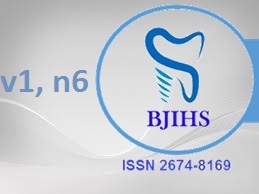Resumo
Introduction: Techniques of hair transplantation are evolving with time both in terms of use of better methods of graft harvestment and implantation. The result of the procedure ultimately depends on the tenderness with which grafts are handled.
Aims: The aim of this study was to evaluate efficacy and feasibility of using implanter in premade slits for implantation of the graft.
Materials and Methods: This technique was used in 104 patients who were willing to undergo hair transplantation by follicular unit extraction. After administration of local anesthesia, the recipient sites were created. Thereafter, the processes of scoring the skin with a motorized punch, graft extraction, and implantation using implanter into the premade slits were performed simultaneously. These patients were followed up to look for the time period of initiation of hair growth. Improvement was assessed by comparing basic and specific classification (BASP) at the baseline and during subsequent follow-up.
Results: Of 104 patients, 103 (99%) were men and one (1%) was woman. According to pretransplant BASP score, 98 (94.2%) patients were having severe type and 6 (5.8%) were having mild type. As per the posttransplant BASP score, patients having severe and mild type were 24 and 80, respectively. Improvement in the BASP score (from severe to mild type) was seen in 74 (71%) patients and no change was seen in 30 (29%) patients. Hair growth started becoming visible after two to five months and “good” results were obtained in all except two patients after a follow-up period varying from 8 to 18 months.
Conclusion: Placement of the grafts into premade slits using implanter will help in improved results because of minimal graft handling, more graft placement in less time, and thereby reducing body out of time.
Referências
2. Sethi P, Bansal A. Direct hair transplantation: a modified follicular unit extraction technique. J Cutan Aesthet Surg. 2013;6:100–5.
3. Harris JA. Follicular unit extraction. Facial Plast Surg Clin North Am. 2013;21:375–84.
4. Lee SJ, Lee HJ, Hwang SJ, Kim DW, Jun JB, Chung SL, et al. Evaluation of survival rate after follicular unit transplantation using the KNU implanter. Dermatol Surg. 2001;27:716–20.
5. Kim JC. Graft implanters. In: Ungerand W, Shapiro R, editors. Hair transplantation. 5th ed. New York: Informa; 2011. pp. 404–6.
6. Caroli S, Pathomvanich D, Amonpattana K, Kumar A. Current status of hair restoration surgery. Int Surg. 2011;96:345–51.
7. Bicknell LM, Kash N, Kavouspour C, Rashid RM. Follicular unit extraction hair transplant harvest: a review of current recommendations and future considerations. Dermatol Online J. 2014;20
8. Lee DY, Lee JH, Yang JM, Lee ES. New instrument for hair transplant: multichannel hair transplanter. Dermatol Surg. 2005;31:379.
9. Speranzini M. Graft placement using the dull needle implanter (DNI) technique. Hair Transplant Forum Int. 2017;27:52–6.
10. Bansal, Arika, et al. "Use of implanters in premade recipient sites for hair transplantation." Journal of Cutaneous and Aesthetic Surgery 12.4 (2019): 250.
OS AUTORES DECLARAM NÃO HAVER CONFLITOS DE INTERESSE / THE AUTHORS DECLARE NO CONFLICTS OF INTEREST
Os autores são detentores dos direitos autorais mediante uma licença CCBY 4.0.

